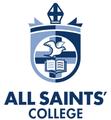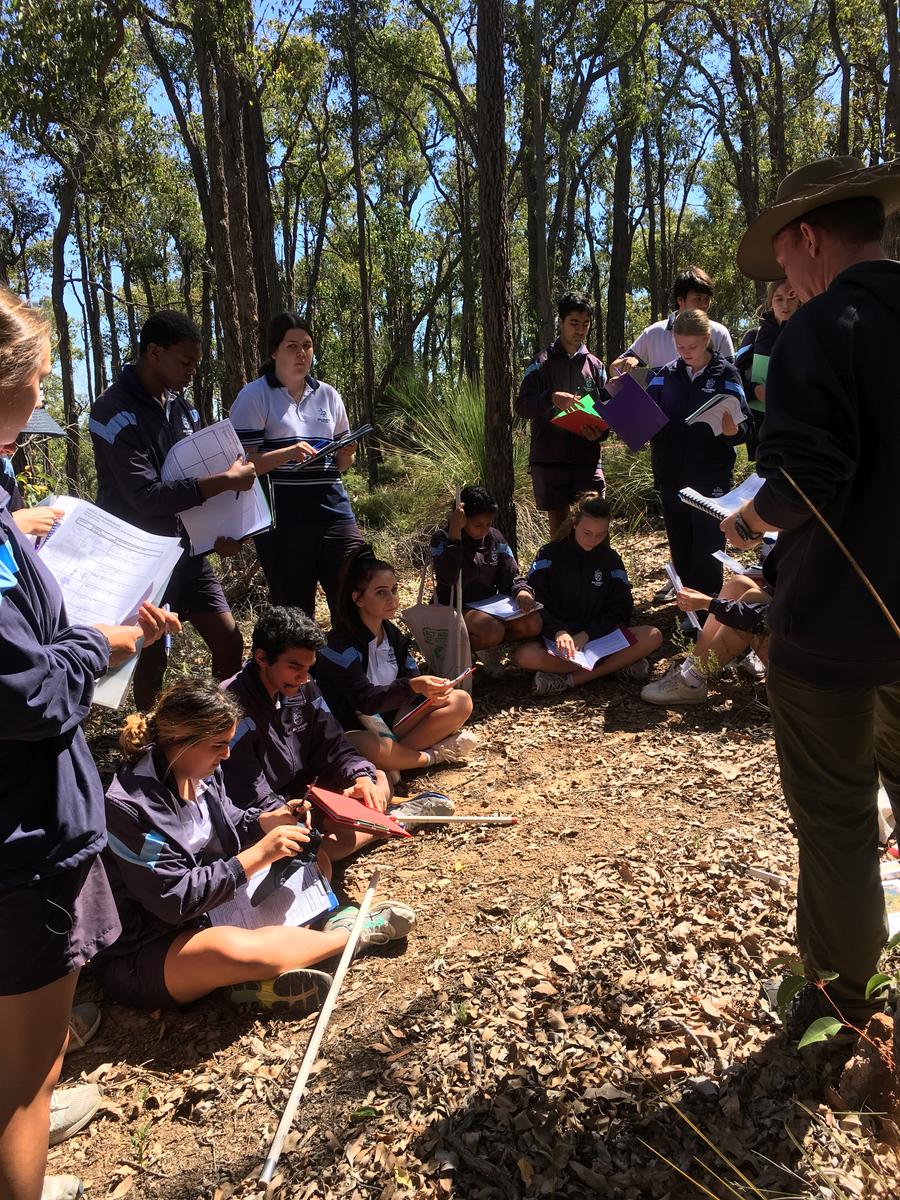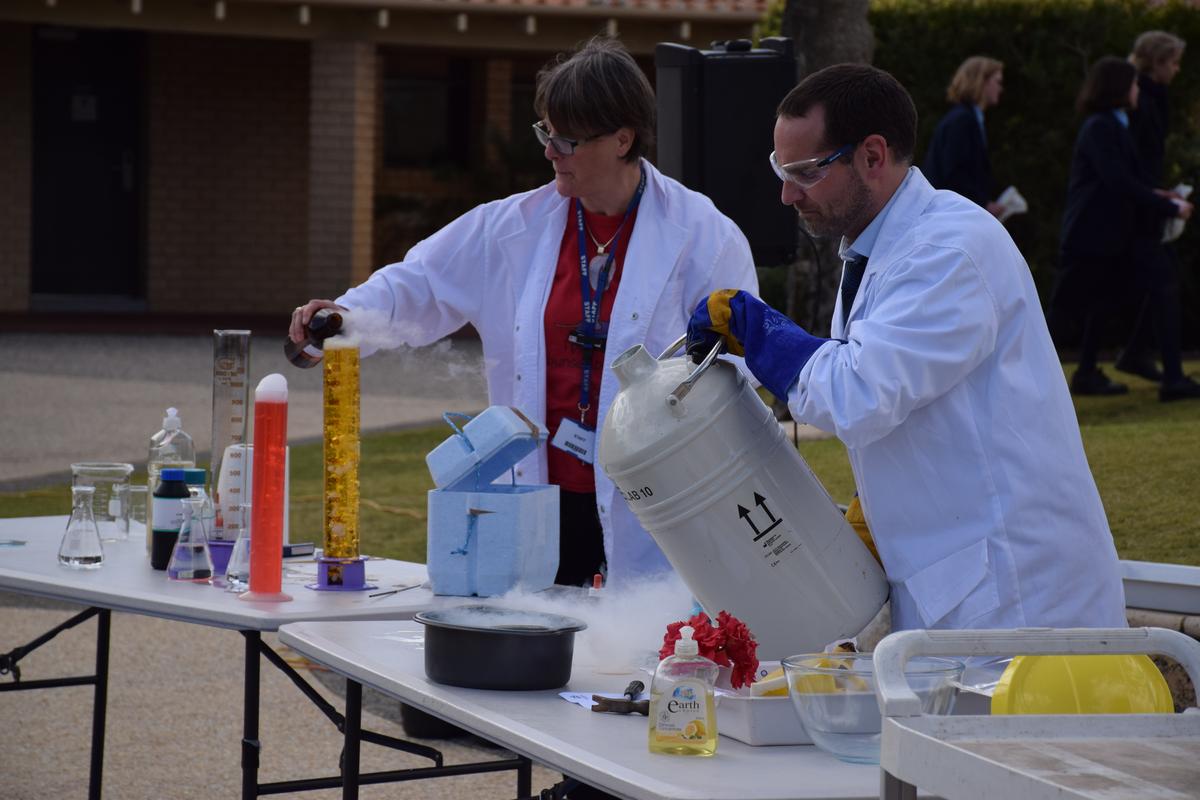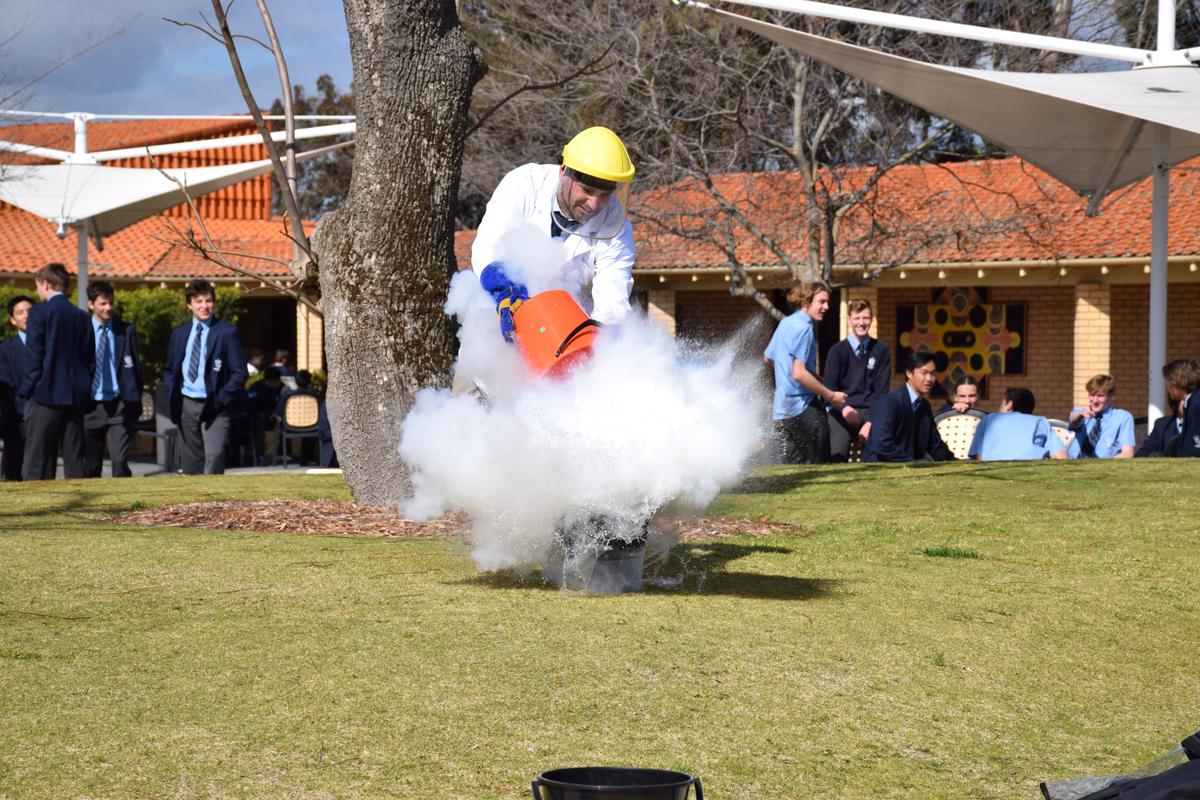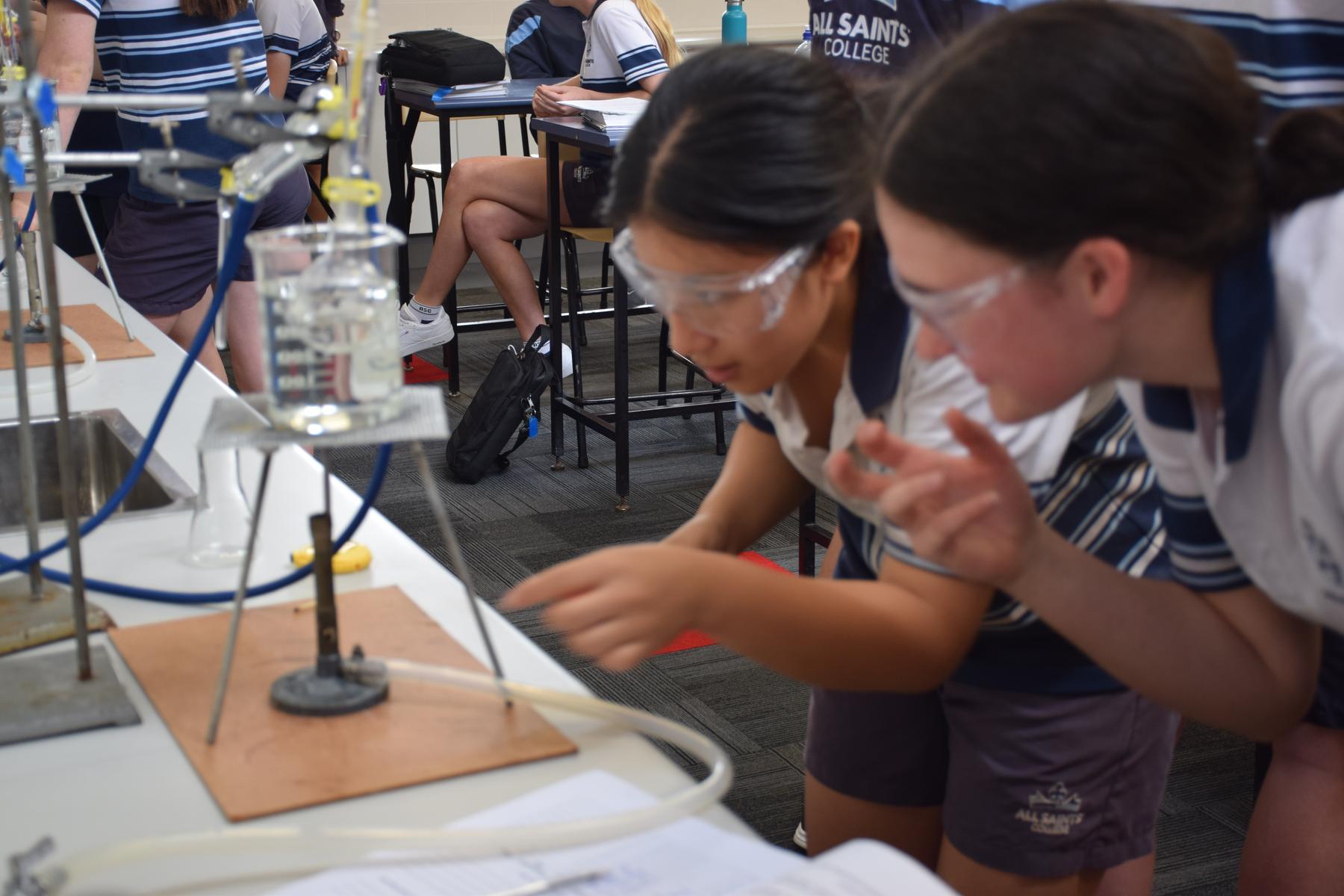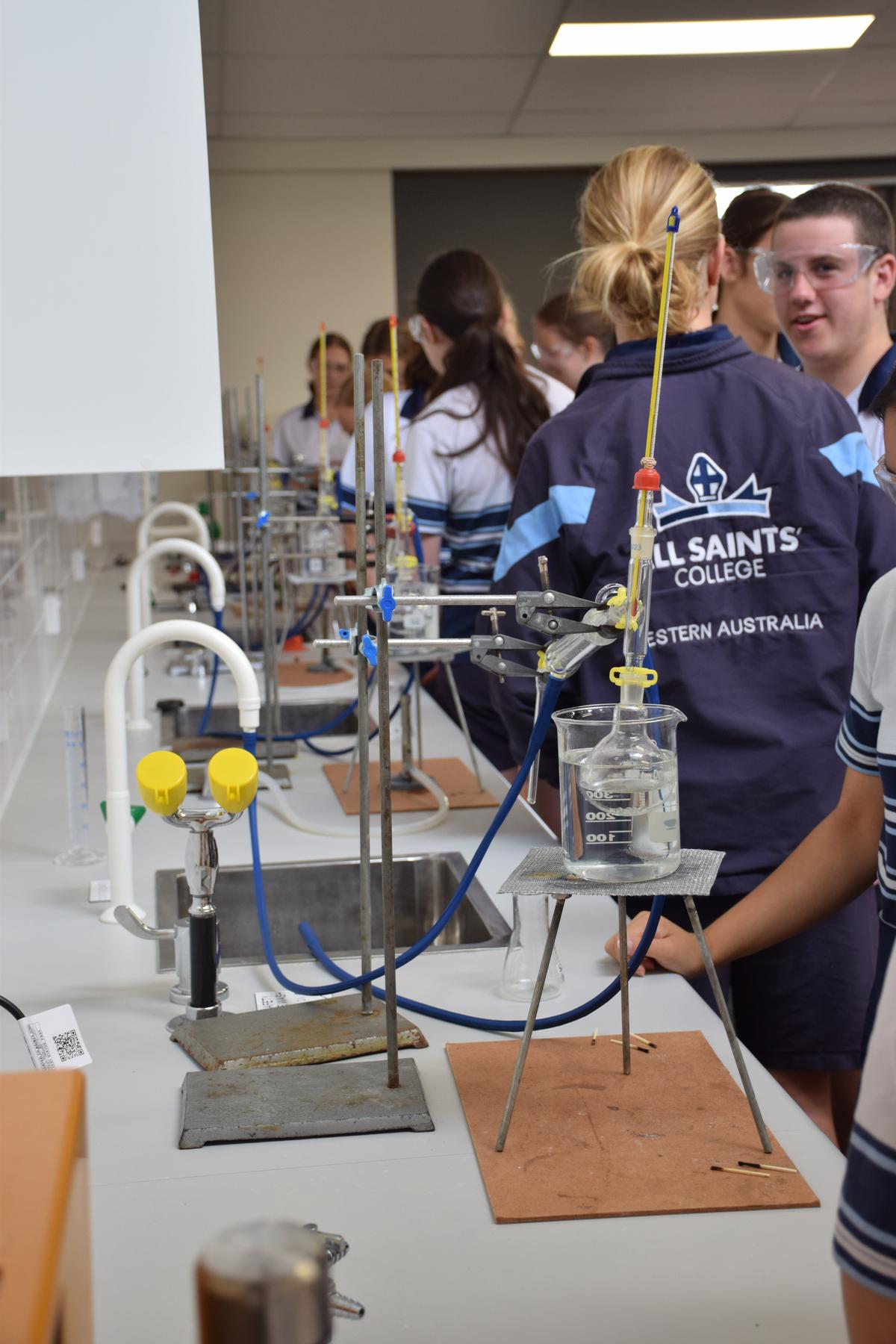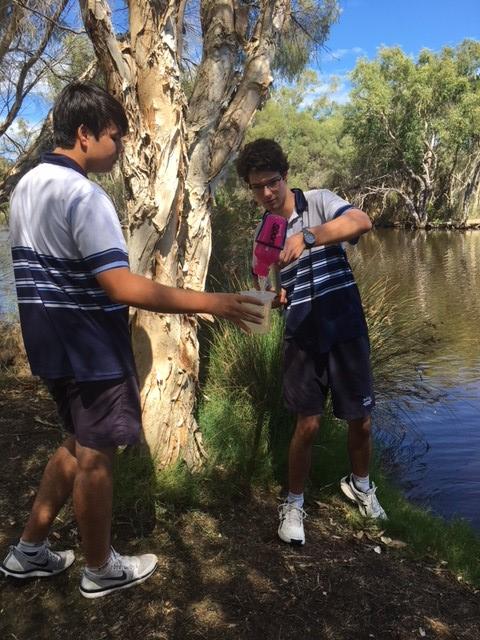SCIENCE LEARNING AREA
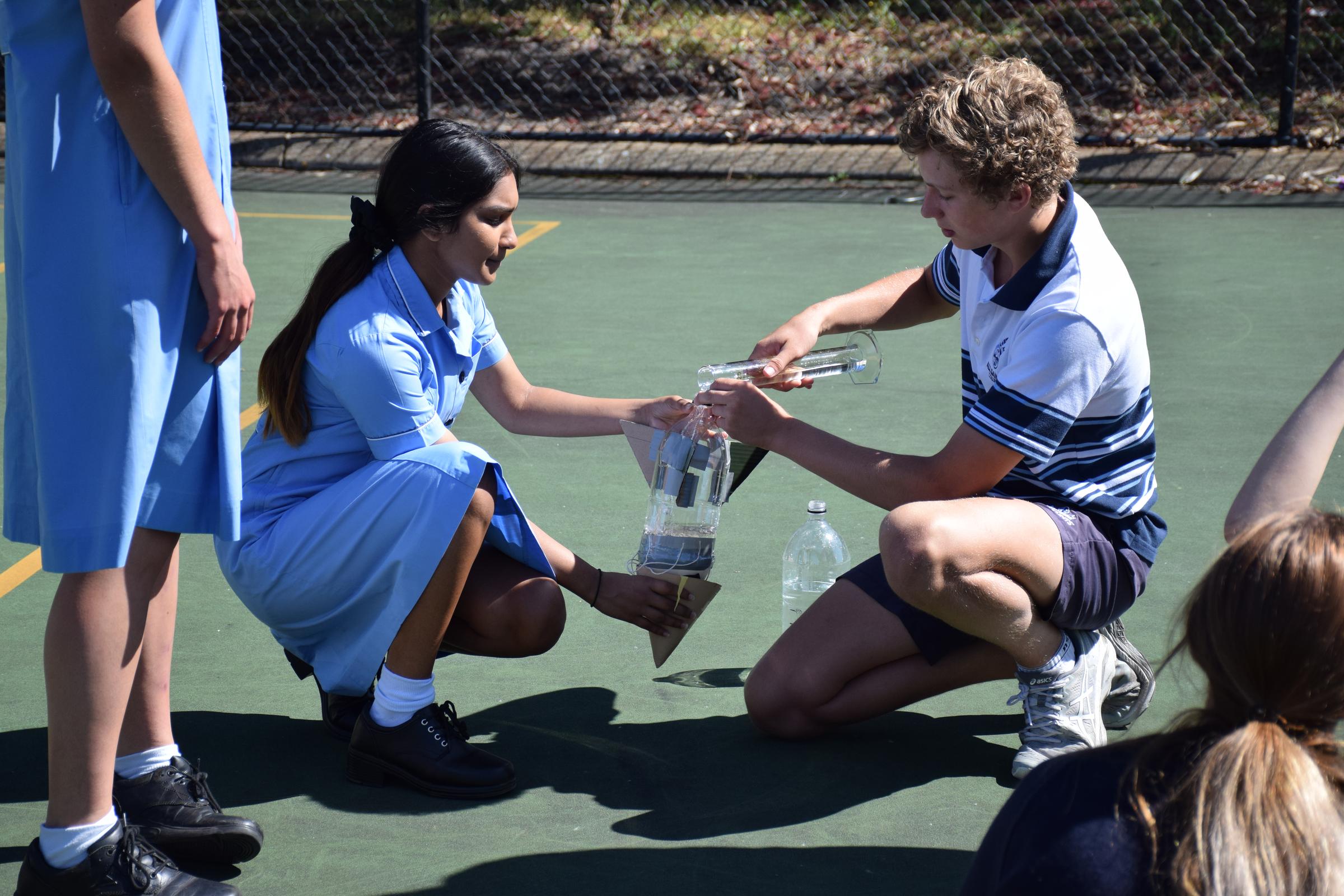
BIOLOGY – ATAR COURSE
Biology is the study of the fascinating diversity of life as it has evolved and as it interacts and functions. Investigation of biological systems and their interactions, from cellular processes to ecosystem dynamics, has led to biological knowledge and understanding that enable us to explore and explain everyday observations, find solutions to biological issues, and understand the processes of biological continuity and change over time.
Students develop their investigative, analytical and communication skills through field, laboratory and research investigations of living systems and through critical evaluation of the development, ethics, applications and influences of contemporary biological knowledge in a range of contexts.
Studying the course provides students with a suite of skills and understandings that are valuable to a wide range of further study pathways and careers, including those in medical and veterinary fields, food and marine sciences, agriculture, biotechnology, environmental rehabilitation, biosecurity, quarantine, conservation and eco-tourism. This course will also provide a foundation for students to critically consider and to make informed decisions about contemporary biological issues in their everyday lives.
Students studying Biology undertake field work on a camp, which incurs an additional cost of approximately $120.
Year 11
The syllabus is divided into two units, each of one semester duration and typically delivered as a pair.
Unit 1: Ecosystems and biodiversity
In this unit, students analyse abiotic and biotic ecosystem components and their interactions, using classification systems for data collection, comparison and evaluation.
Unit 2: From single cells to multicellular organisms
In this unit, students investigate the interdependent components of the cell system and the multiple interacting systems in multicellular organisms.
Year 12
The syllabus is divided into two units which are delivered as a pair.
Unit 3: Continuity of species
In this unit, students investigate mechanisms of heredity and the ways in which inheritance patterns can be explained, modelled and predicted; they connect these patterns to population dynamics and apply the theory of evolution by natural selection in order to examine changes in populations.
Unit 4: Surviving in a changing environment
In this unit, students investigate system change and continuity in response to changing external conditions and pathogens; they investigate homeostasis and the transmission and impact of infectious disease; and they consider the factors that encourage or reduce the spread of infectious disease at the population level.
Students undertaking this course will be expected to have achieved a ‘C’ grade or above in Year 10 Science.
CHEMISTRY – ATAR COURSE
Chemistry is the study of materials and substances and the transformations they undergo through interactions and the transfer of energy. Chemistry develops students' understanding of the key chemical concepts and models of structure, bonding, and chemical change, including the role of chemical, electrical and thermal energy. Students learn how models of structure and bonding enable chemists to predict properties and reactions and to adapt these for particular purposes.
Students explore key concepts and models through active inquiry into phenomena and through a range of contexts. They design and conduct qualitative and quantitative investigations both individually and collaboratively. They investigate questions and hypotheses, manipulate variables, analyse data, evaluate claims, solve problems and develop and communicate evidence-based arguments and models. Some of the major challenges and opportunities facing the world are inextricably associated with chemistry. Issues of sustainability on local, national and global levels can be tackled by the application of chemical knowledge using a range of technologies.
An understanding of chemistry is relevant to a range of careers, including those in forensic science, environmental science, engineering, medicine, dentistry, pharmacy and sports science. Additionally, chemistry knowledge is valuable in occupations that rely on an understanding of materials and their interactions, such as art, winemaking, agriculture and food technology. Some students will use this course as a foundation to pursue further studies in chemistry, and all students will become more informed citizens, able to use chemical knowledge to inform evidence-based decision making and engage critically with contemporary scientific issues.
Year 11
The syllabus is divided into two units, each of one semester duration, which are typically delivered as a pair.
Unit 1: Chemical fundamentals: structure, properties and reactions
In this unit, students use models of atomic structure and bonding to explain the macroscopic properties of materials. Students develop their understanding of the energy changes associated with reactions and the use of equations to calculate the masses of substances involved in reactions.
Unit 2: Molecular interactions and reactions
In this unit, students continue to develop their understanding of bonding models and the relationship between structure, properties and reactions, including consideration of the factors that affect the rate of reactions. Students investigate the unique properties of water and the properties of acids and bases, and use equations to calculate the concentrations and volumes of solutions involved in reactions.
Year 12
The syllabus is divided into two units which are delivered as a pair.
Unit 3: Equilibrium, acids and bases, and redox reactions
In this unit, students investigate the concept of reversibility of reactions and the dynamic nature of equilibrium in chemical systems; contemporary models of acid-base behaviour that explain their properties and uses; and the principles of oxidation and reduction reactions, including the generation of electricity from electrochemical cells.
Unit 4: Organic chemistry and chemical synthesis
In this unit, students develop their understanding of the relationship between the structure, properties and reactions of different organic functional groups. Students also investigate the process of chemical synthesis to form useful substances and products and the need to consider a range of factors in the design of these processes.
Students undertaking this course will be expected to have achieved a minimum of a ‘B’ grade in both Year 10 Science and Mathematics.
HUMAN BIOLOGY – ATAR COURSE
Human biology covers a wide range of ideas relating to the functioning human. Students learn about themselves, relating structure to function and how integrated regulation allows individuals to survive in a changing environment. They research new discoveries that are increasing our understanding of the causes of dysfunction, which can lead to new treatments and preventative measures. Reproduction is studied to understand the sources of variation that make each of us unique individuals. Through a combination of classical genetics, and advances in molecular genetics, dynamic new biotechnological processes have resulted. Population genetics is studied to highlight the longer term changes leading to natural selection and evolution of our species.
Students develop their understanding of the cumulative and evolving nature of scientific knowledge and the ways in which such knowledge is obtained through scientific investigations. They learn to think critically, to evaluate evidence, to solve problems and to communicate understandings in scientific ways.
An understanding of human biology is valuable for a variety of career paths. The course content deals directly and indirectly with many different occupations in fields, such as science education, medical and paramedical fields, food and hospitality, childcare, sport and social work.
Year 11
The syllabus is divided into two units, each of one semester duration, which are typically delivered as a pair.
Unit 1: The functioning human body
In this unit, students analyse how the structure and function of body systems, and the interrelationships between systems, support metabolism and body functioning.
Unit 2: Reproduction and inheritance
In this unit, students study the reproductive systems of males and females, the mechanisms of transmission of genetic material from generation to generation, and the effects of the environment on gene expression.
Year 12
The syllabus is divided into two units which are delivered as a pair.
Unit 3: Homeostasis and disease
This unit explores the nervous and endocrine systems and the mechanisms that help maintain the systems of the body to function within normal range, and the body’s immune responses to invading pathogens.
Unit 4: Human variation and evolution
This unit explores the variations in humans, their changing environment and evolutionary trends in homonids.
Students undertaking this course will be expected to have achieved a ‘C’ grade or above in Year 10 Science.
INTEGRATED SCIENCE – GENERAL COURSE
Integrated Science encourages students to be questioning, reflective and critical thinkers about scientific issues. The course is based on an integrated view of scientific knowledge that draws on the traditional disciplines of science and new scientific technology to enable students to investigate issues that are interesting and relevant in the modern world. This course provides opportunities for students to consider contemporary scientific developments. This process enables them to make informed judgements and decisions about questions that directly affect their lives and the lives of others.
The course is grounded in the belief that science is, in essence, a practical activity and seeks to reflect the creative element of science as inquiry. It emphasises formulating and testing hypotheses and the critical importance of evidence in forming conclusions. It requires them to be creative, intellectually honest, to evaluate arguments with scepticism and to conduct their investigations in ways that are ethical, fair and respectful of others.
Integrated Science is an inclusive course and aims to be attractive to students with a wide variety of backgrounds, interests and career aspirations.
Year 11
The syllabus is divided into two units, each of one semester duration, which are typically delivered as a pair. The content may be taught in an integrated way in one or more contexts over the year.
Unit 1
The emphasis of this unit is on biological and Earth systems, focusing on the following topics:
- interrelationships between Earth systems
- structure and function of biological systems
- ecosystems and sustainability
- species continuity and change
Unit 2
The emphasis of this unit is on physical and chemical systems, focusing on the following topics:
- atomic structure
- chemical reactions
- mixtures and solutions
- motion and forces
- energy
Year 12
The syllabus is divided into two units which are delivered as a pair. The content may be taught in an integrated way in one or more contexts over the year.
Unit 3
The emphasis of this unit is on biological and Earth systems focusing on the following topics:
- interrelationships between Earth systems
- structure and function of biological systems
- ecosystems and sustainability
- species continuity and change.
Unit 4
The emphasis of this unit is on physical and chemical systems, focusing on the following topics:
- chemical reactions
- mixtures and solutions
- motion and forces
- energy
This course is available to all students who have studied Science Year 10.
PHYSICS – ATAR COURSE
Physics is a fundamental science that endeavours to explain all the natural phenomena in the universe using a small number of assumptions, models, laws and theories. Physics has helped to unlock the mysteries of the universe and provides the foundation of understanding upon which modern technologies and all other sciences are based.
This course uses qualitative and quantitative models and theories to visualise, explain and predict physical phenomena. Predictions are tested by making observations and quantitative measurements. Students gather, analyse and interpret data to investigate a range of phenomena and technologies.
Students investigate how the unifying concept of energy explains diverse phenomena and provides a powerful tool for analysing how systems interact throughout the universe on multiple scales. Students learn how new observations can lead to models and theories being refined and developed.
Students learn how an understanding of physics is central to the identification of, and solutions to, some of the key issues facing an increasingly globalised society. They consider how physics contributes to diverse areas in contemporary life, such as engineering, renewable energy generation, communication, development of new materials, vehicle safety, medical science, and the exploration of the universe.
Studying senior secondary science provides students with a suite of skills and understandings that are valuable to a wide range of further study pathways and careers. Studying physics provides a foundation in physics knowledge, understanding and skills for those students who wish to pursue tertiary study in science, engineering, medicine and technology.
Year 11
The syllabus is divided into two units, each of one semester duration, which are typically delivered as a pair.
Unit 1: Thermal, nuclear and electrical physics
Students investigate energy production by considering heating processes, radioactivity and nuclear reactions, and investigate energy transfer and transformation in electrical circuits.
Unit 2: Linear motion and waves
Students describe, explain and predict linear motion, and investigate the application of wave models to sound phenomena.
Year 12
The syllabus is divided into two units which are delivered as a pair.
Unit 3: Gravity and electromagnetism
Students investigate models of motion in gravitational, electric and magnetic fields to explain how forces act at a distance.
Unit 4: Revolutions in modern physics
Students use the theory of electromagnetism to explain the production and propagation of electromagnetic waves and investigate how shortcomings in existing theories led to the development of the quantum theory of light and matter, the Special Theory of Relativity, and the Standard Model of particle physics.
Students undertaking this course will be expected to have achieved a minimum of a ‘B’ grade in both Year 10 Science and Mathematics. Students must have a demonstrated competency in algebra, the geometry of triangles and trigonometry.
PSYCHOLOGY – ATAR COURSE
In the Psychology ATAR course students will be introduced to psychological knowledge which supports an understanding of the way individuals function in groups. Students learn about major psychological models and theories, and the methods used to conduct scientific investigations in the discipline of psychology. Students apply research methods and ethical principles as they analyse data to illustrate how empirical procedures are used to examine phenomena, such as memory, attention, attitudes, personality and group behaviour. Acquiring this foundation of scientific method and critical thinking is a valuable skill which students can apply throughout their study, work and everyday lives.
Year 11
The Year 11 syllabus is divided into two units, each of one semester duration, which are typically delivered as a pair. The notional time for each unit is 55 class contact hours.
Unit 1
This unit focuses on a number of concepts that enable students to gain an understanding of how and why people behave the way they do. Students learn about the human brain and explore the impact of external factors on behaviour, such as physical activity and psychoactive drugs. Cognitive processes, such as sensation and perception, and selective and divided attention are investigated. Students examine different types of relationships and the role of verbal and non-verbal communication in initiating, maintaining and regulating these. Students are introduced to ethics in psychological research and carry out investigations.
Unit 2
This unit focuses on developmental psychology. Students analyse twin and adoption studies to gain insight into the nature/nurture debate and look at the role of play in assisting development. Students explore what is meant by the term personality and examine historical perspectives used to explain personality. They also explore behaviour and causes of prejudice. Psychological research methods studied in Unit 1 are further developed.
Each unit includes:
- a unit description – a short description of the focus of the unit
- unit content – the content to be taught and learned.
Year 12
An understanding of the Year 11 content is assumed knowledge for students in Year 12. It is recommended that students studying Unit 3 and Unit 4 have completed Unit 1 and Unit 2.
The Year 12 syllabus is divided into two units, each of one semester duration, which are typically delivered as a pair. The notional time for each unit is 55 class contact hours.
Unit 3
The focus of this unit is to introduce new concepts which assist students to have a better understanding of human behaviour. In this unit, students study the functions of the four lobes of the cerebral cortex and examine how messages are transmitted from the brain to the body. They focus on how behaviour is influenced by learning, by reviewing classical and operant conditioning, negative and positive reinforcement and observational learning. They further expand their knowledge and understanding by examining behaviour that is not influenced by learning, such as heredity, hormones and recreational drugs. Students learn about the impact of others on individual behaviour. They examine the socialisation processes observed within families and explore how social background and gender can shape communication styles. They expand on their knowledge of ethics in psychological research by considering the role of the experimenter and participants’ rights such as privacy and anonymity. Students engage in detailed investigations of experimental methods, noting practical issues associated with research and its application.
Unit 4
In this unit, students are introduced to theories of development, including Piaget’s theory of cognitive development and Kohlberg’s theory of moral development. They review contemporary personality theories and their limitations and analyse the causes of conformity and obedience by investigating the results of famous experiments conducted by Asch, Milgram and Zimbardo. They also gain an understanding into factors that shape a sense of community and explore the varied responses individuals have to significant events. Students continue to develop their understanding and application of psychological research methods. They manipulate dependent and independent variables to test hypotheses and use statistical significance to draw conclusions
Mathematical skills expected of students studying the Psychology ATAR course
The Psychology ATAR course requires students to use the mathematical skills they have developed through the Year 7–10 Mathematics Curriculum, in addition to the numeracy skills they have developed through the Science Inquiry Skills strand of the Science Curriculum.
Within the Science Inquiry Skills strand, students are required to gather, represent and analyse numerical data to identify the evidence that forms the basis of scientific arguments, claims or conclusions. In gathering and recording numerical data, students are required to make measurements using appropriate units to an appropriate degree of accuracy.
It is assumed that students will be able to:
- perform calculations involving addition, subtraction, multiplication and division of quantities
- perform approximate evaluations of numerical expressions
- express fractions as percentages, and percentages as fractions
- calculate percentages
- recognise and use ratios
- transform decimal notation to power of ten notation
- translate information between graphical, numerical and algebraic forms
- construct and interpret frequency tables and diagrams, pie charts and histograms
- describe and compare data sets using mean, median and inter-quartile range
- interpret the slope of a linear graph.
